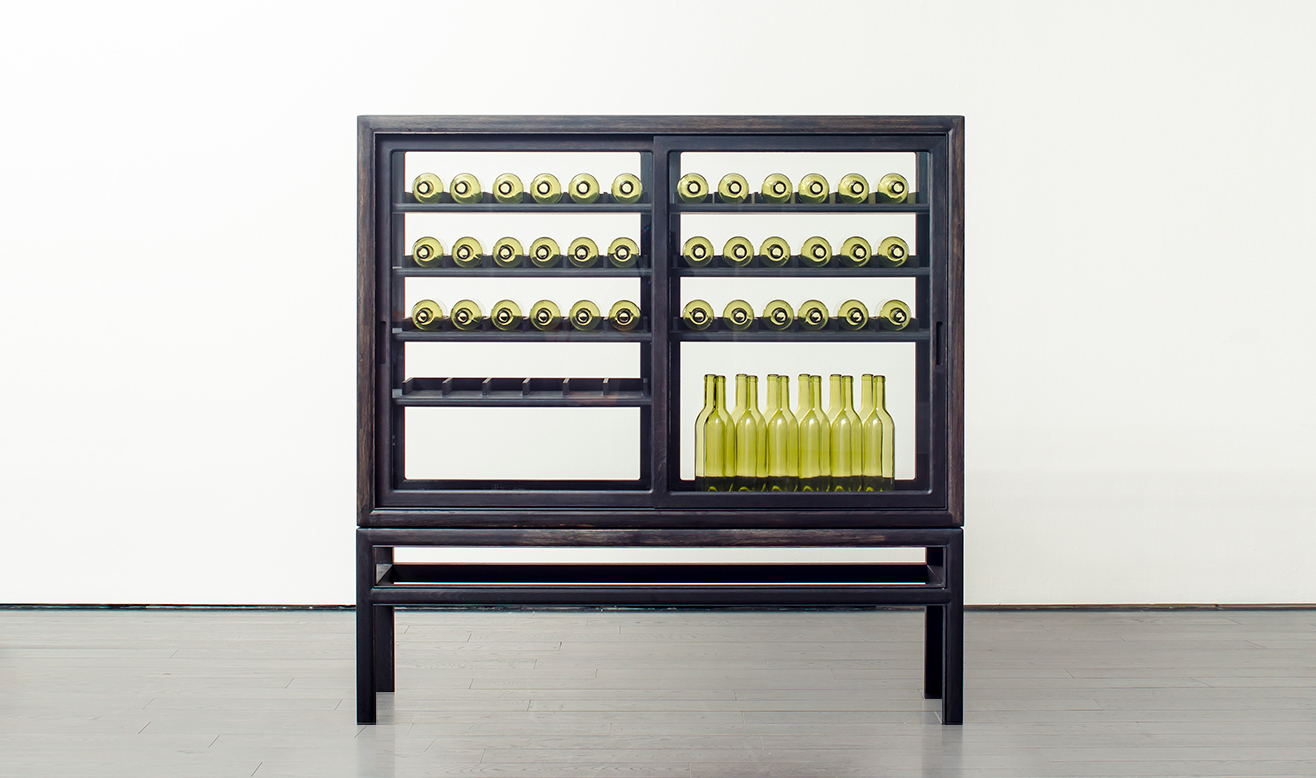
First introduced in 2015, the museum cabinet for private collection was designed to exquisitely display cherished items with the elegance of a gallery or museum showcase. It has since become an iconic representation of our commitment to craftsmanship.
The frame structure incorporates traditional Japanese joinery techniques, ensuring both strength and refined aesthetics. A gentle outward curve on the outer surface softens the otherwise rigid appearance of the cabinet, while the classic tama-buchi edge molding decoration adds a distinctly Japanese and oriental essence.
The sliding doors, following time-honored Japanese construction methods, move along carefully carved grooves instead of metal rails, reflecting the craftmanship found in traditional Japanese furniture and architecture. Crafted entirely through Japanese woodworking techniques, the cabinet is akin to a small architectural masterpiece. Its frame evokes the post-and-beam construction of wooden buildings, while the legs resemble the sturdy framework that upholds traditional structures.
Natural light streams through its five glass surfaces, illuminating the objects within, much like the soft glow entering a beautifully designed home. Placed near a window, the cabinet captures and reflects the surrounding greenery, transforming into an ever-changing tableau of light and shadow. More than just a storage piece, it becomes an artistic and sculptural presence in any space.
Released in 2015 as a cabinet that beautifully showcases pieces like collection cases in museums, museum cabinet for private collection has become a symbolic product of our craftsmanship.
The frame composing the body incorporates traditional Japanese assembly methods, emphasizing strength and design. We gave the outer surface of the frame a gentle bulge that replaces the hard expression common to cabinets with a soft impression. Classic beading decoration lends a Japanese and Oriental air.
With the fittings of Japanese furniture and houses in mind, we equipped this cabinet with Japanese-style sliding doors, using the old-fashioned method of carving grooves at the top and bottom of the door frame without the use of rails or other metal parts.
In Japan, where wooden architecture over a millennium old still stands, techniques have matured in line with local features and climate, and outstanding woodworking technologies have been handed down to the present. We constructed this cabinet using only Japanese woodworking techniques, as if making a small building.











Materials

Beeswax

Tannin black

Beeswax

Clear






















